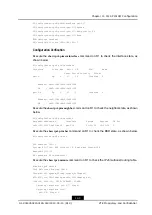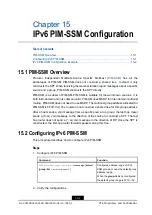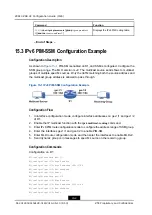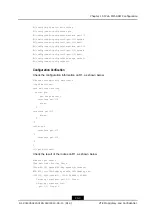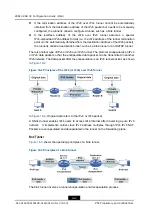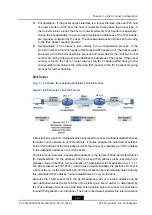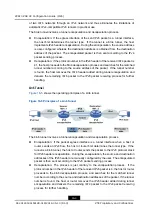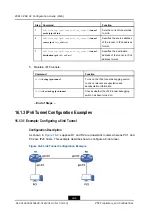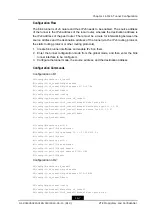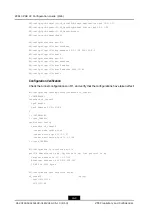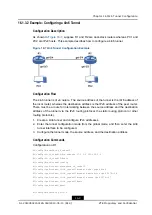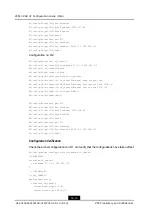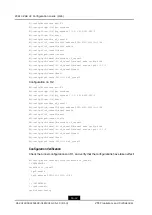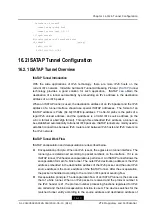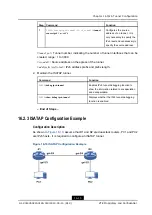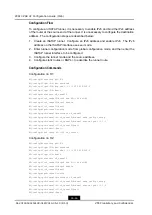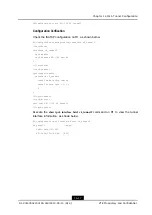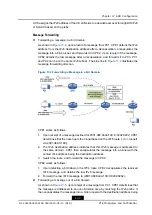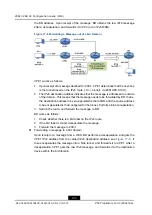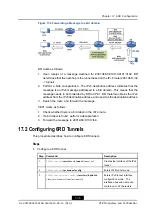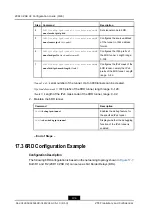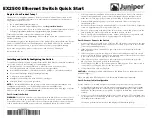
Chapter 16 IPv6 Tunnel Configuration
16.1.3.2 Example: Configuring a 4in6 Tunnel
Configuration Description
As shown in
, suppose R1 and R2 are dual-stack routers whereas PC1 and
PC2 are IPv4 hosts. This example describes how to configure a 4in6 tunnel.
Figure 16-7 4in6 Tunnel Configuration Example
Configuration Flow
The 4in6 tunnel is of v4 nature. The source address of the tunnel is the IPv6 address of
the local router, whereas the destination address is the IPv6 address of the peer router.
There must be a route for interworking between the source address and the destination
address of the tunnel (via the IPv6 routing protocol, the static routing protocol or other
routing protocols).
1.
Create a 4in6 tunnel and configure IPv4 addresses.
2.
Enter the tunnel configuration mode from the global mode, and then enter the 4in6
tunnel interface to be configured.
3.
Configure the tunnel mode, the source address, and the destination address.
Configuration Commands
Configuration on R1:
R1(config)#interface v6_tunnel2
R1(config-if-v6_tunnel2)#ip address 27.0.1.1 255.255.0.0
R1(config-if-v6_tunnel2)#exit
R1(config)#ipv6-tunnel-config
R1(config-ipv6-tunnel)#interface v6_tunnel2
R1(config-ipv6-tunnel-if-v6_tunnel2)#tunnel mode ipipv6 4in6
R1(config-ipv6-tunnel-if-v6_tunnel2)#tunnel destination ipv6 2078::28
R1(config-ipv6-tunnel-if-v6_tunnel2)#tunnel source ipv6 2078::27
R1(config-ipv6-tunnel-if-v6_tunnel2)#exit
R1(config-ipv6-tunnel)#exit
R1(config)#interface gei-2/4
16-9
SJ-20140504150128-018|2014-05-10 (R1.0)
ZTE Proprietary and Confidential

